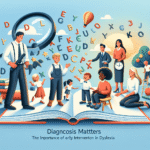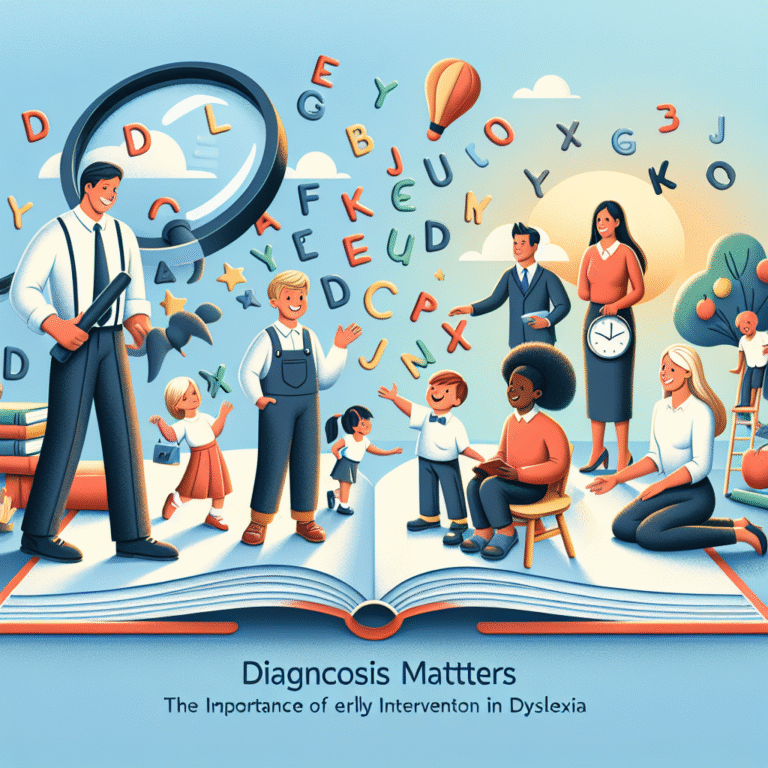
The Ultimate Guide to Language-Based Learning Disabilities and Mental Health: Understanding the Connection
Introduction
When we think about learning disabilities, we often picture challenges in reading, writing, and speaking. Yet, the hidden complexities of Language-Based Learning Disabilities (LBLDs) extend far beyond the classroom. They weave an intricate connection with mental health that deserves our attention. But why should we care about this connection? With 1 in 5 children experiencing learning disabilities, the ripple effects on academic success, self-esteem, and mental well-being are profound. This guide delves into Language-Based Learning Disabilities and Mental Health: Understanding the Connection, exploring how they interplay and offering insights that can empower educators, parents, and individuals alike.
What Are Language-Based Learning Disabilities?
Defining LBLDs
Language-Based Learning Disabilities encompass a spectrum of challenges that affect an individual’s ability to comprehend and use verbal and written language effectively. These disabilities can manifest as difficulties in reading (dyslexia), writing (dysgraphia), and even speaking (dysphasia).
Common Types of LBLDs
In this section, we break down the common types of LBLDs:
| Type | Description |
|---|---|
| Dyslexia | Difficulty in reading accurately and fluently. |
| Dysgraphia | Difficulty in writing coherently, often impacting handwriting. |
| Dysphasia | Difficulty in using language for communication. |
Understanding these specific challenges is essential for grasping the relation of LBLDs to mental health.
The Interplay Between LBLDs and Mental Health
Emotional Consequences of LBLDs
Many children with LBLDs face emotional challenges stemming from academic struggles. Research indicates that these struggles can lead to increased anxiety, depression, and a lack of self-esteem. A child who finds reading impossible may feel inept, leading to a cycle of negativity that affects their mental well-being.
Case Study: Sarah’s Story
Sarah, an 8-year-old diagnosed with dyslexia, loved storytelling but struggled with reading. Over time, her frustration led to intense anxiety surrounding school. With proper support, including specialized tutoring and emotional coaching, Sarah not only improved her reading skills but also gained confidence and joy in learning.
Analysis: Sarah’s transformation exemplifies how understanding and addressing LBLDs can mitigate mental health issues, paving the way for success.
The Impact of Mental Health on Learning
How Mental Health Influences Academic Performance
Conversely, mental health issues can exacerbate the struggles faced by those with LBLDs. Anxiety and depression can hinder focus and motivation, creating a debilitating cycle.
| Impact Area | Influence |
|---|---|
| Cognitive Function | Diminished concentration and memory. |
| Motivation | Decreased willingness to engage in learning activities. |
| Social Interaction | Increased isolation and social withdrawal. |
By acknowledging this interplay, educators can tailor their approaches to better support students.
Tools for Bridging the Gap
Teaching Strategies for Supporting LBLDs
Implementing effective teaching strategies can make all the difference. Here are some proven strategies to support students with LBLDs:
- Multisensory Instruction: Engaging multiple senses during lessons can enhance retention.
- Technology Integration: Tools like text-to-speech and speech-to-text can help bridge gaps.
- Social-Emotional Learning: Incorporating emotional check-ins and resilience training into the curriculum fosters a supportive environment.
Case Study: A School’s Innovative Program
A local school introduced a program aimed at integrating emotional and academic support. They combined academic accommodations with mental health resources, resulting in significant improvements in student performance and well-being.
Analysis: This program underscores the importance of a holistic approach to education, making the connection clear between LBLDs and mental health.
Encouraging Open Dialogues
Family Involvement
Families play a crucial role in recognizing and addressing the complexities of LBLDs. Open discussions about both academic and emotional challenges can empower children. Parents should:
- Encourage Self-Advocacy: Guide children in expressing their needs to educators.
- Celebrate Small Wins: Recognize efforts and progress in all forms, boosting self-esteem.
Community Support
Community programs that promote awareness about LBLDs can combat stigma and create supportive networks. Collaboration with local mental health services can foster a robust support system for families.
Monitoring and Evaluation
Assessing Progress
Regular assessments are vital. By tracking both academic performance and emotional well-being over time, educators and parents can identify areas needing intervention. Data can be organized into chart formats for easier analysis.
| Assessment Areas | Metrics |
|---|---|
| Academic Skills | Reading scores, writing samples. |
| Emotional Health | Self-reported surveys, behavior observations. |
Engaging students in this process can help them feel more in control, enhancing their emotional resilience.
Conclusion
The connection between Language-Based Learning Disabilities and mental health is intricate but undeniably crucial. By fostering understanding, providing support, and promoting open dialogue, we can empower individuals facing these challenges to thrive academically and emotionally. As a collective, we have the potential to create nurturing environments that allow every learner to shine.
FAQs
What are the main types of Language-Based Learning Disabilities?
- The most common are dyslexia, dysgraphia, and dysphasia.
How do LBLDs affect mental health?
- Struggles with LBLDs can lead to anxiety, depression, and low self-esteem.
What strategies can parents use to support children with LBLDs?
- Encouraging self-advocacy and celebrating small achievements are effective methods.
Are there effective teaching strategies for students with LBLDs?
- Yes! Multisensory instruction, technology integration, and social-emotional learning are powerful tools.
How can community involvement assist families dealing with LBLDs?
- Community awareness can reduce stigma and provide essential resources and support.
- What role does emotional health play in academic performance for students with LBLDs?
- Emotional health significantly affects focus, motivation, and social engagement, ultimately impacting academic success.
With the right tools and understanding, we can pave the way for a brighter future for those navigating the dual challenges of Language-Based Learning Disabilities and mental health issues. Together, we can transform struggles into stories of triumph.









